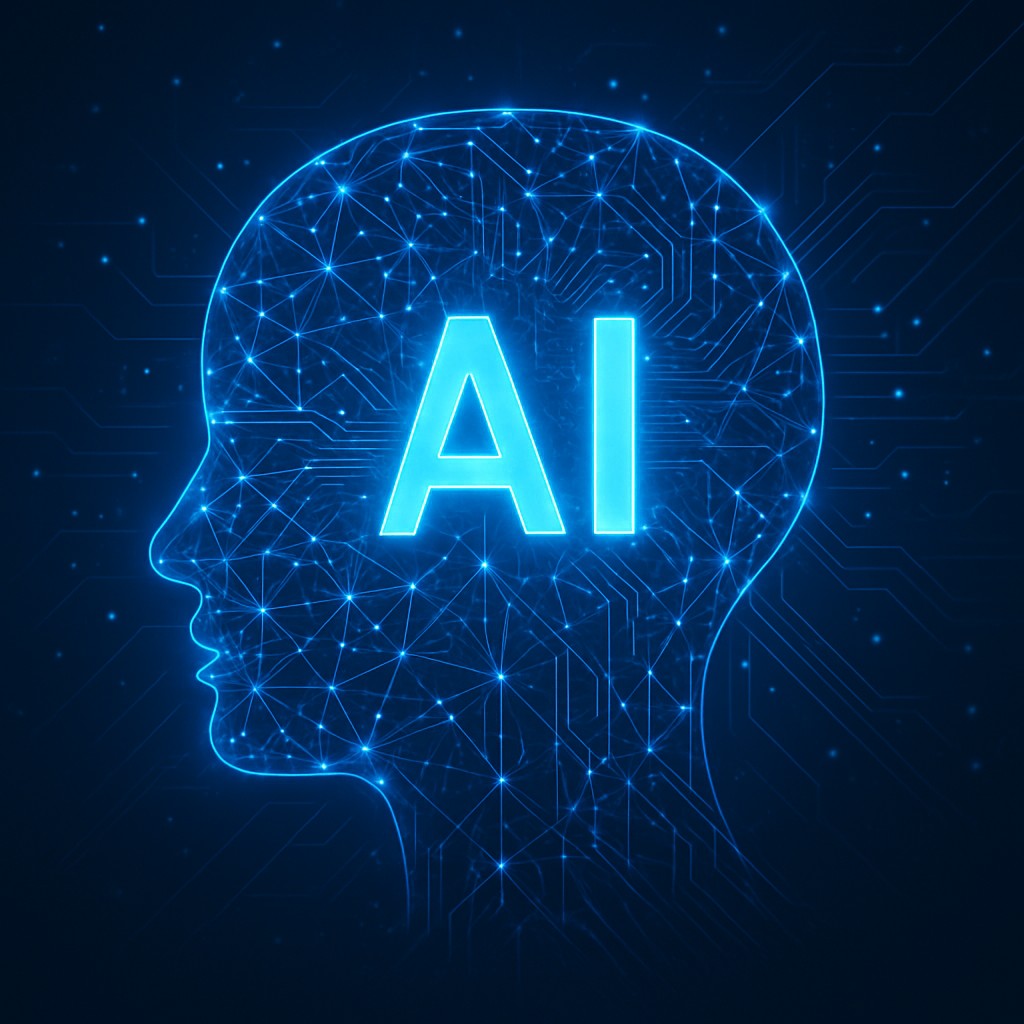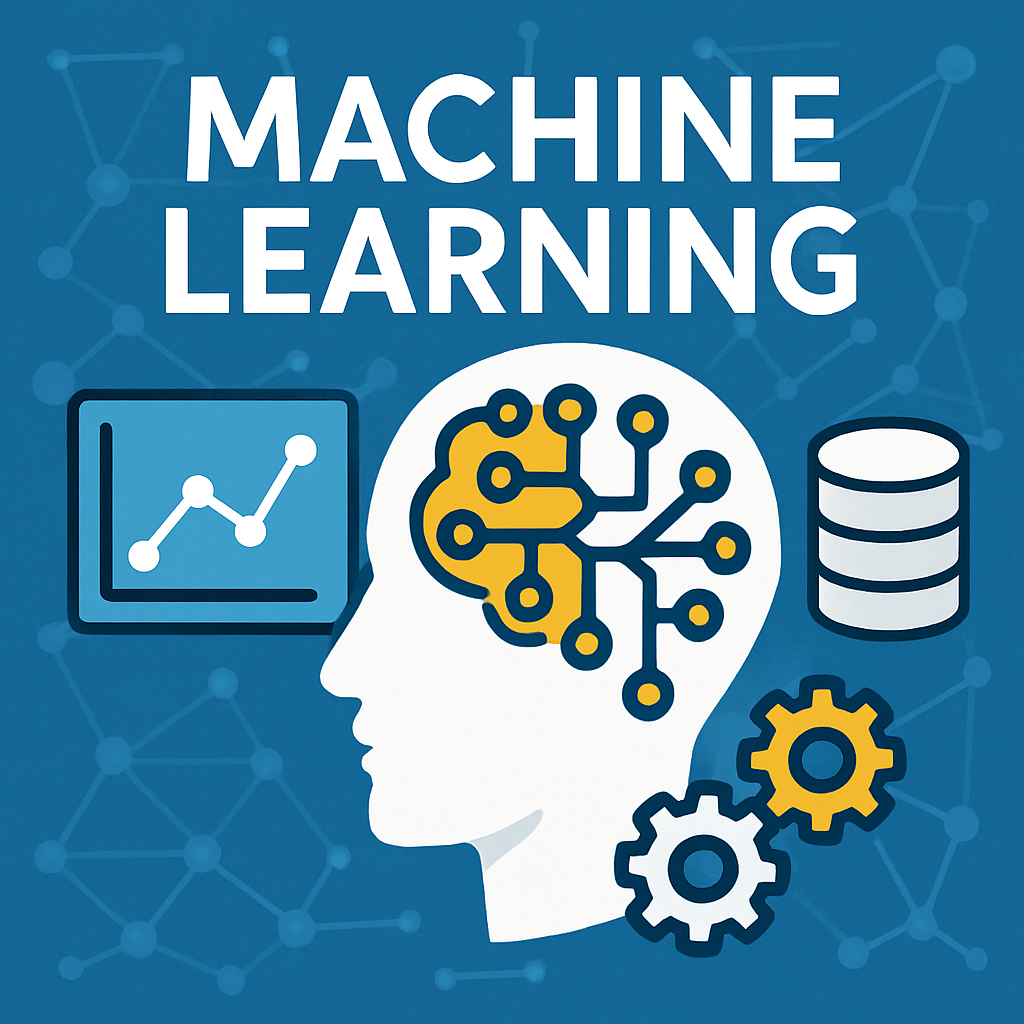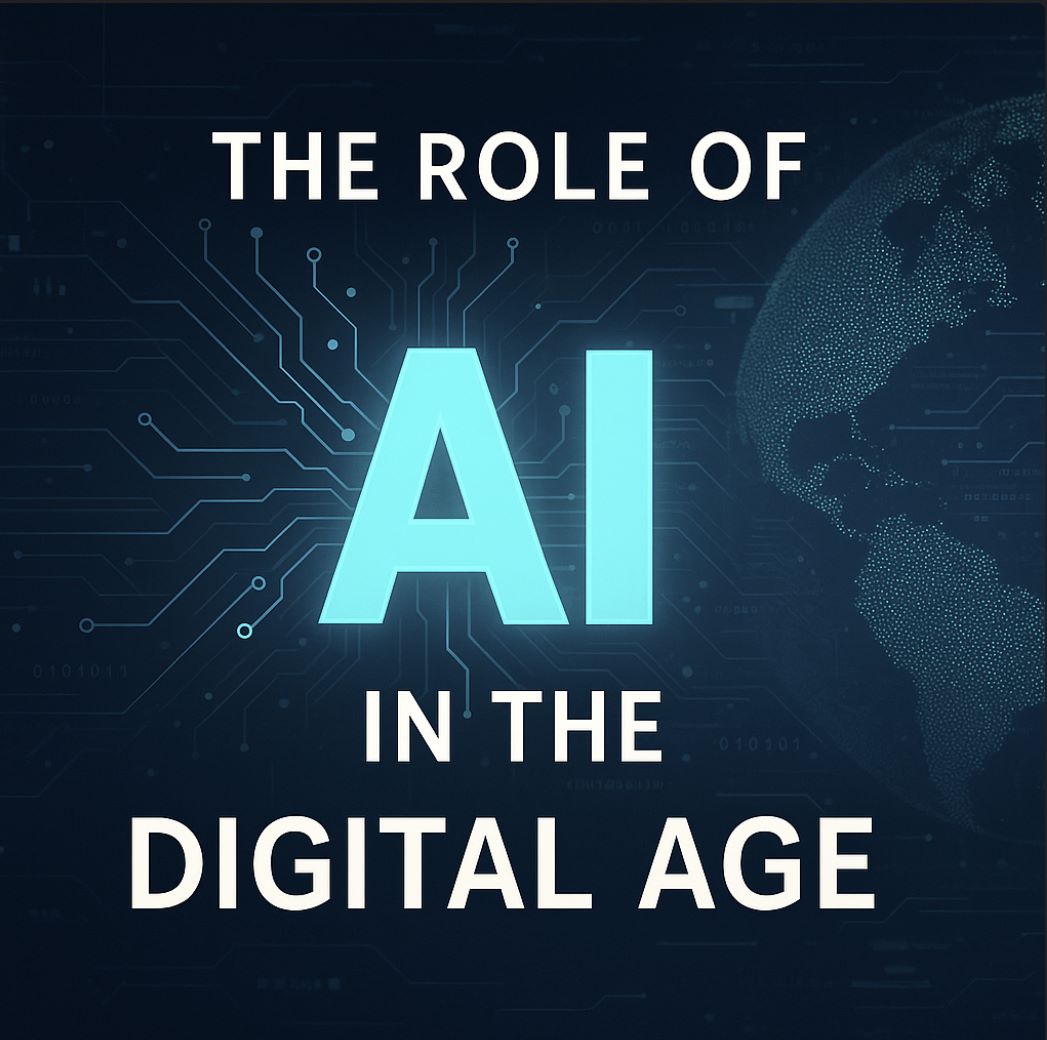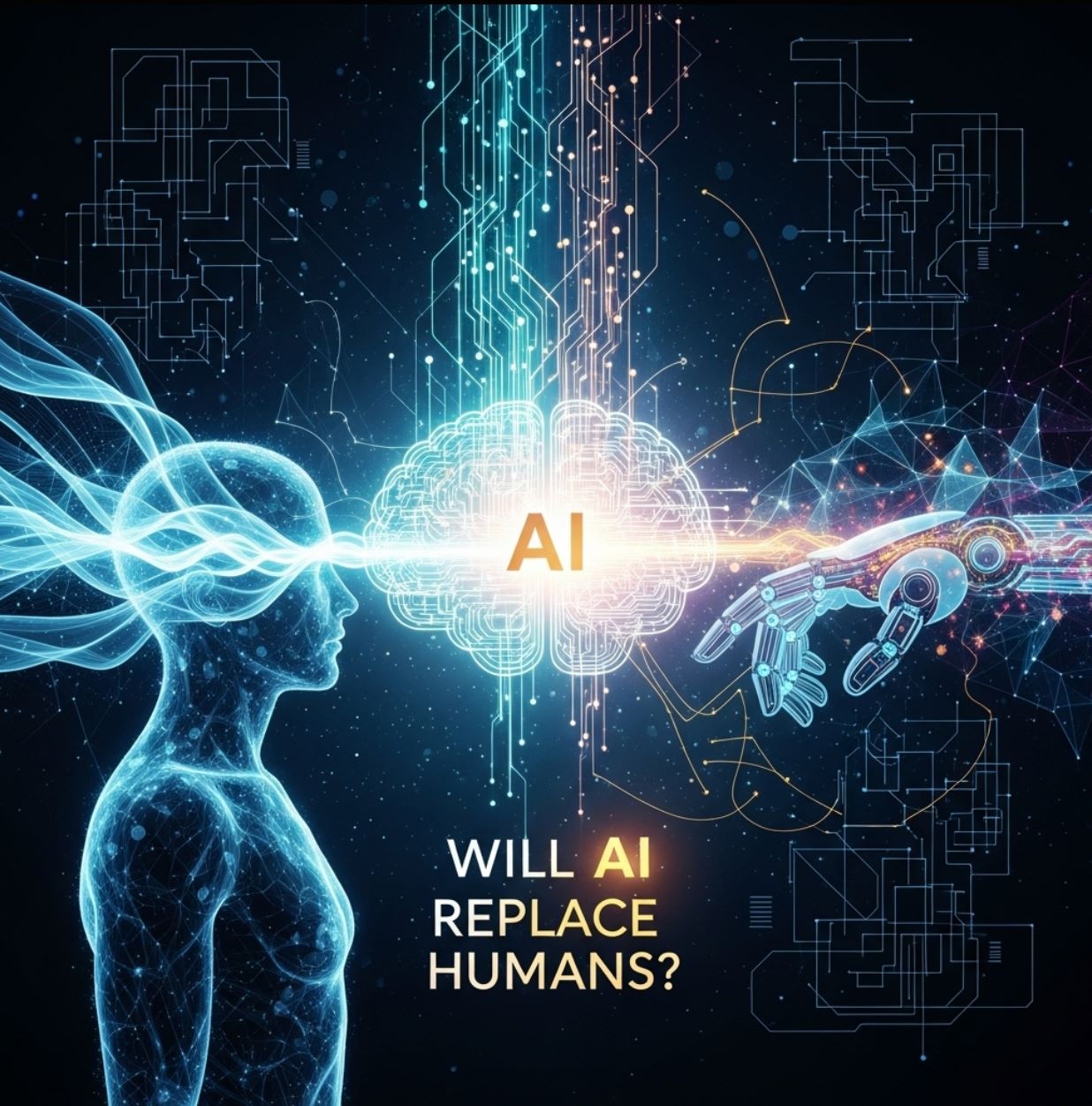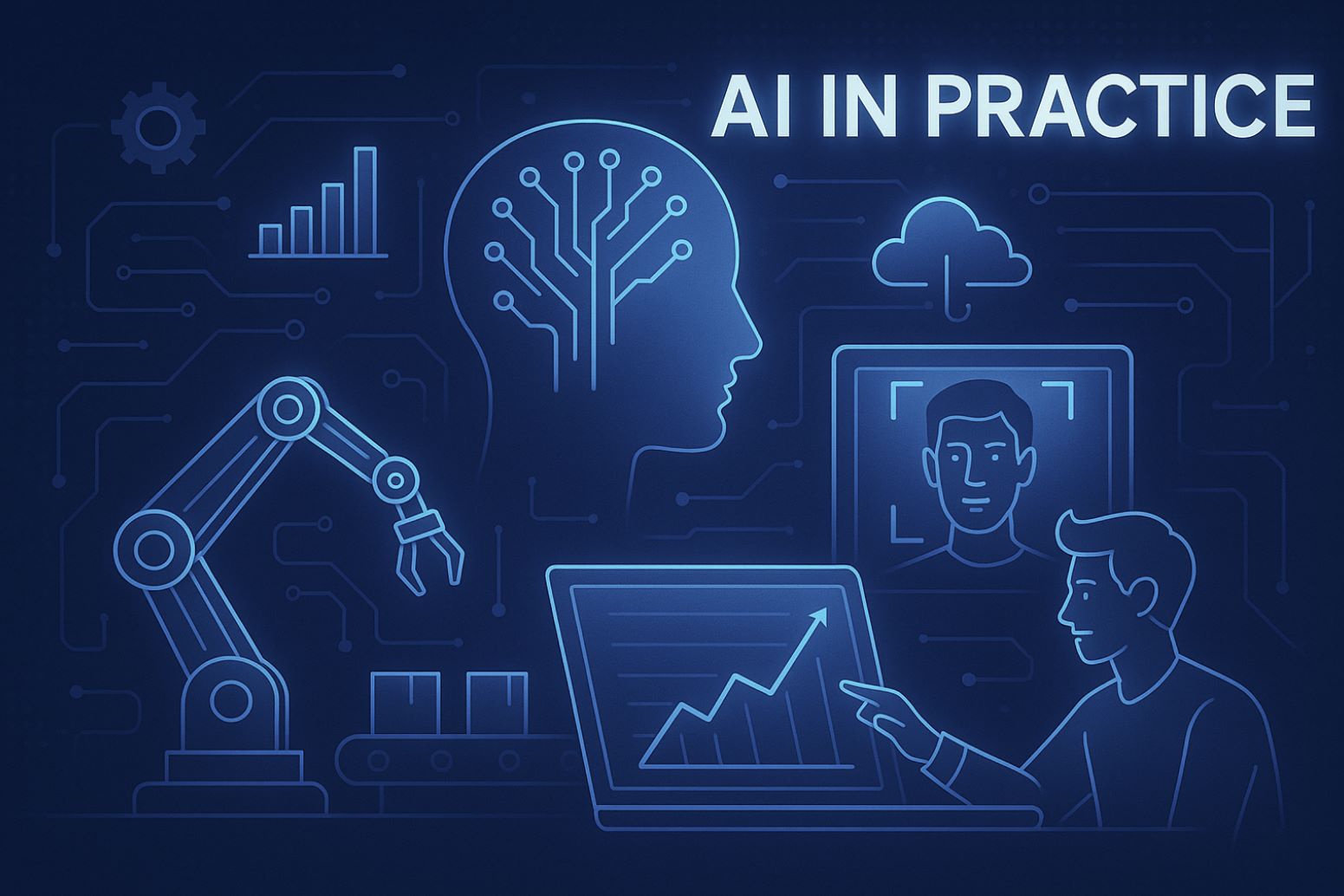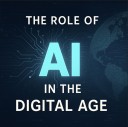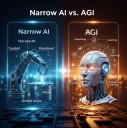Artificial Intelligence (AI) can be simply understood as a technology that helps machines “think” and solve problems similarly to humans. AI stands for Artificial Intelligence – meaning intelligence created by humans. Today, AI is everywhere, quietly powering many familiar applications in our daily lives. From virtual assistants on phones, movie recommendations, to self-driving cars and robots – all involve AI.
This article will help you understand what AI is in the clearest and most comprehensive way, including its definition, types of AI, how AI works, practical applications, as well as the benefits, challenges, and future of this revolutionary technology.
What is AI? – Definition and Origin of the Term
What is AI? - AI (Artificial Intelligence) is the ability of computer systems to perform tasks that usually require human intelligence, such as learning, reasoning, problem-solving, perception, and decision-making. In other words, AI is a technology programmed for machines to simulate human thinking – able to recognize images, create poetry, make predictions based on data, and more. The ultimate goal of AI is to create “intelligent” software that can automate complex tasks and interact naturally with humans.
The term "Artificial Intelligence" was first used in the mid-20th century. In 1950, computer scientist Alan Turing posed the famous question “Can machines think?” and proposed the Turing Test to evaluate machine intelligence. By 1956, the term AI officially appeared when the field was established as an independent scientific discipline. Since then, AI has experienced ups and downs – periods of optimistic breakthroughs and times known as the “AI winter” when funding and interest declined.
However, since 2012, AI has seen a strong resurgence thanks to the combination of big data, machine learning algorithms, and computing power (e.g., using GPUs to accelerate deep learning algorithms). Especially in the 2020s, the emergence of advanced Generative AI models like ChatGPT sparked a new “AI boom,” while also raising ethical concerns and the need for governance to ensure AI develops safely and benefits humanity.
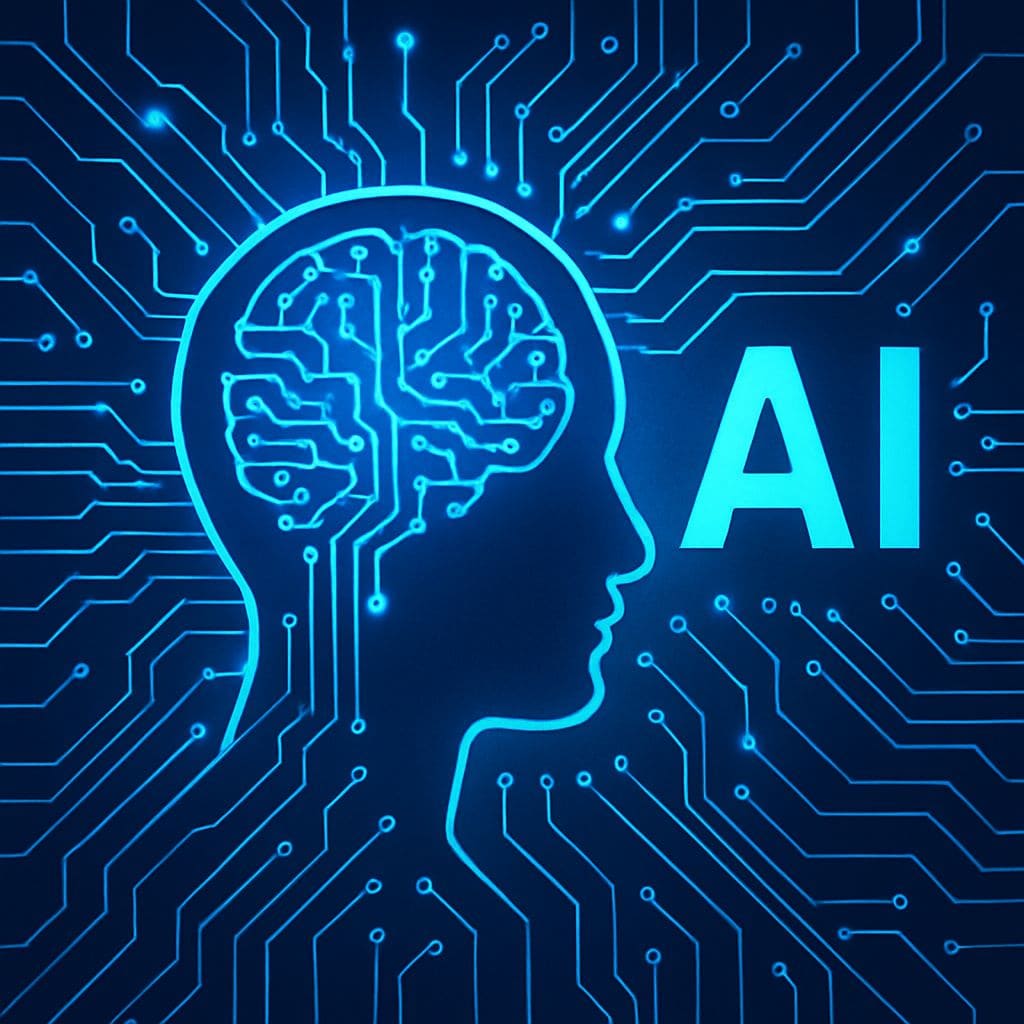
Types of Artificial Intelligence (AI)
Narrow (Weak) AI vs. General (Strong) AI
Based on capability scope, AI is divided into two main types: Narrow AI (Weak AI/Narrow AI) and General AI (Strong AI/General AI). Narrow AI refers to systems designed to perform one or a few specific tasks exceptionally well.
Most AI applications today fall into this category – for example, virtual assistants (Siri, Alexa) that understand voice commands and respond, self-driving cars that only drive, or facial recognition software that only performs identification. Narrow AI is very good within its limited scope, but lacks consciousness or intelligence like humans, and cannot operate beyond its programmed tasks.
In contrast, General AI (AGI) is the concept of AI systems with human-level versatile intelligence, capable of self-learning and applying knowledge to solve any problem across various fields. An ideal strong AI can understand, reason, and perform any intellectual task a human can do.
However, General AI does not yet exist in reality – it is a long-term goal researchers aim for. Recent advances with large language models like ChatGPT have raised hopes for AGI, but currently, we have only achieved narrow AI.
Additionally, experts mention the concept of Artificial Superintelligence (ASI) – AI that far surpasses human intelligence. This envisions machines becoming self-aware and smarter than humans in every aspect. Super AI remains a science fiction hypothesis; if realized, it would pose major challenges for control and coexistence with humanity. It is important to emphasize that we are still far from ASI, and current research focuses on progressing toward General AI.
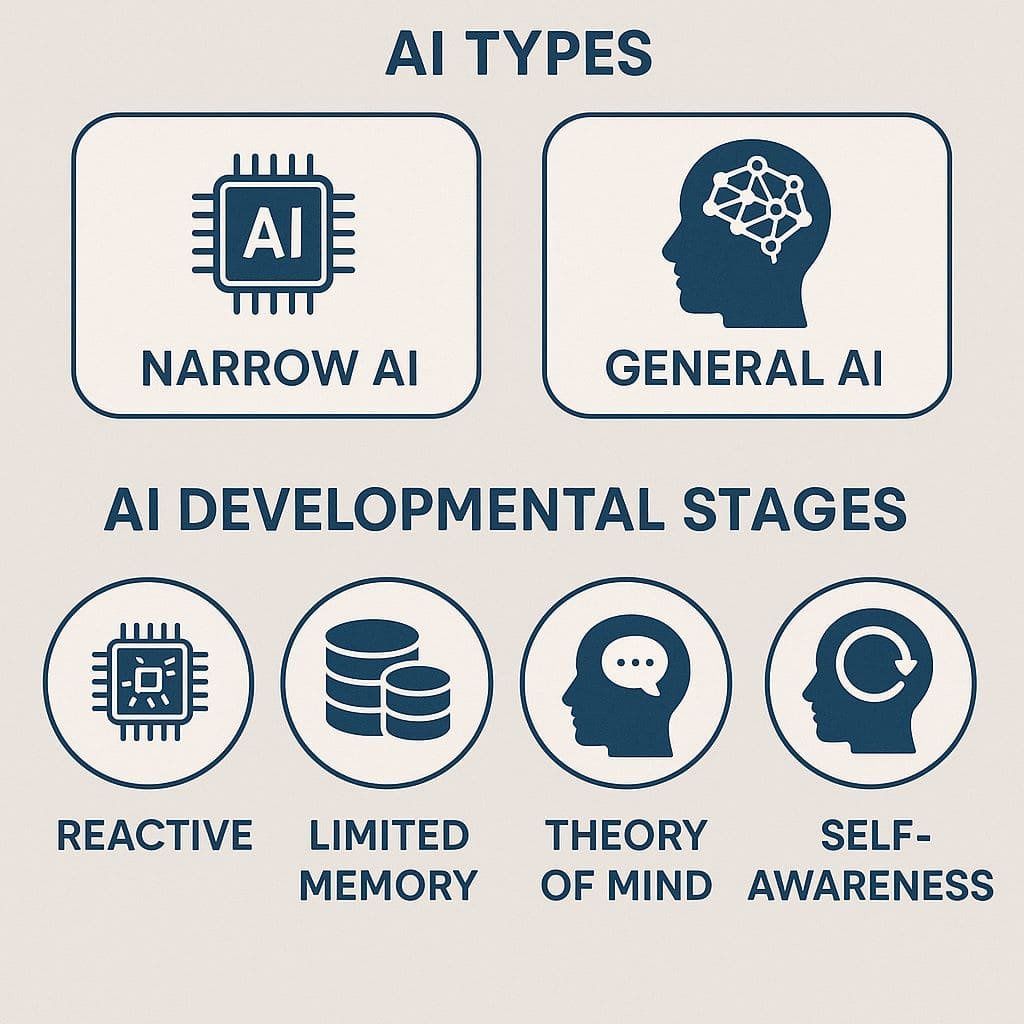
Four Levels of AI Development (Reactive, Limited Memory, Theory of Mind, Self-awareness)
Besides classification by scope, another way to categorize AI levels is based on complexity and “thinking” ability of the system. Professor Arend Hintze (Michigan State University) proposed four evolutionary AI levels based on intelligence:
Type 1 – Reactive Machines:
This is the simplest form of AI, with no memory and only reacts to the present. These AI systems are programmed to handle specific tasks based on what they “see” at the moment, without learning from past experiences.
A classic example is IBM’s Deep Blue chess program: it could analyze the board and choose moves to defeat grandmaster Garry Kasparov, but it did not “remember” previous games and did not improve tactics over time. This AI type purely reacts to current situations.
Type 2 – Limited Memory:
At this level, AI has memory and uses past experiences to inform current decisions. Many AI systems today belong to this type. For example: self-driving car technology uses limited memory to store observations (traffic signs, obstacles encountered) and gradually improve driving based on accumulated data. Thanks to memory, Type 2 AI is smarter than Type 1 because it can learn to some extent, though still within narrow tasks.
Type 3 – Theory of Mind:
This is an AI level currently under research and not yet perfected. The “theory of mind” means AI can understand human emotions, intentions, and thoughts or those of other entities. An AI at this level would be able to reason about others’ mental states (e.g., guessing if someone is happy or sad, what they want) and predict their behavior. Currently, Type 3 AI does not truly exist, but advances in human-machine interaction and emotion recognition are moving toward this goal.
Type 4 – Self-awareness:
This is the highest and still hypothetical level. Self-aware AI is defined when machines have consciousness of themselves, understanding their own state as independent entities. A self-aware AI would have a “self”, know when it is happy or sad, understand what it is doing and why. This is almost the most perfect artificial intelligence, but currently, no system has reached this level.
Type 4 mainly appears in science fiction – for example, robots with emotions and consciousness like humans. If self-aware AI is ever created, it would be a major milestone but also bring many ethical and safety issues.
Overall, most AI today belongs to Types 1 and 2, meaning reactive or limited memory. Types 3 and 4 remain in the future. This classification helps us imagine the development roadmap of AI: from machines that only react, gradually advancing to those that can understand and be self-aware – the ultimate goal humans hope to achieve in artificial intelligence.
Core Technologies and How AI Works
When talking about AI, people often mention “machine learning” and “deep learning”. In fact, machine learning is a crucial branch of AI. If AI’s goal is to make machines intelligent, then machine learning is the method to achieve that goal – it includes techniques and algorithms that enable computers to learn from data rather than being explicitly programmed.
Deep learning is a specialized branch of machine learning that uses multi-layer artificial neural networks (inspired by the human brain) to learn complex features from data. The explosion of deep learning in the past decade has propelled AI to remarkable progress, as machines began to “learn from millions of examples”, enabling tasks like image recognition and natural language understanding with high accuracy.
Regarding how AI works, it can be simply imagined as follows: AI requires input data (e.g., images, audio, text), then uses algorithms to analyze and extract rules or patterns from that data, and applies those rules to handle new situations.
For example, to teach AI to recognize cat images, developers provide tens of thousands of cat photos (data), AI analyzes to “learn” common features of cats (machine learning finds patterns), and when encountering a new image, AI can predict whether it contains a cat based on learned knowledge.
Unlike traditional programming (writing fixed step-by-step instructions), AI programming focuses on creating models that can improve accuracy through experience.
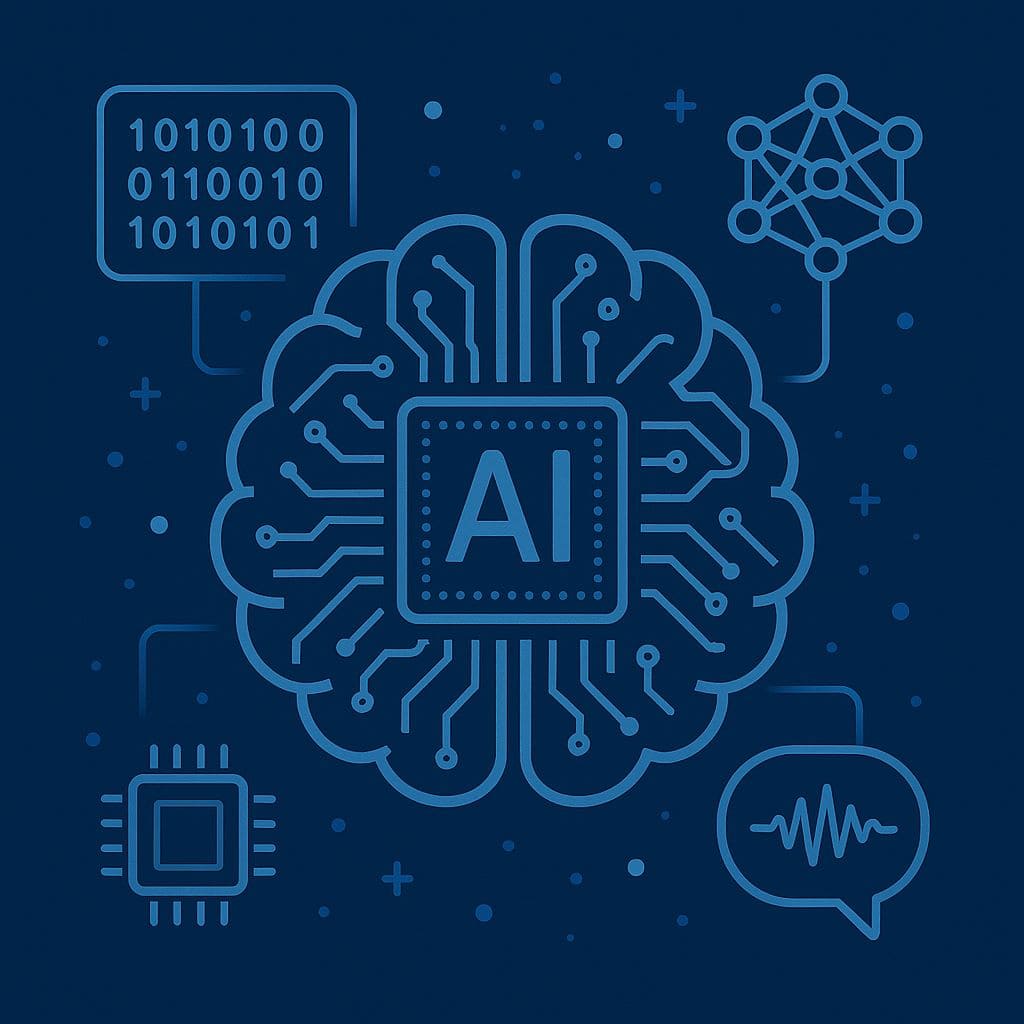
The core components of AI include:
- Algorithms and models: These are the “brain” of AI, determining how AI learns and makes decisions. There are many types of algorithms such as neural networks, decision trees, genetic algorithms, etc. Each suits different problems.
- Data: AI learns from data, so data is like “fuel” for AI. The more and higher quality the data, the better AI learns. Modern AI systems collect massive data from various sources (sensors, text, images, user activities) to find useful patterns.
- Computing power: Training AI, especially deep learning, requires huge computing resources. Thanks to hardware advances (e.g., GPUs, TPUs), training complex AI models has become feasible in shorter times.
- Humans: Although called artificial intelligence, humans play a crucial role. Humans design algorithms, prepare data, supervise training, and adjust AI to ensure effective and reliable operation.
It is also important to note that AI is not only machine learning. Before the machine learning boom, AI had other approaches like rule-based AI (programming fixed logical rules) or evolutionary AI, etc. Today, most AI systems combine multiple techniques. For example, a self-driving car integrates computer vision (to “see” the road), machine learning (to make driving decisions), natural language processing (to communicate with people), and robotics. Main AI fields include:
- Machine learning and deep learning (mentioned above) – the core of modern AI.
- Computer vision – helps machines see and understand images/videos (applications range from facial recognition, medical image analysis to autonomous vehicles).
- Natural language processing (NLP) – helps machines understand and communicate in human language, used in machine translation, virtual assistants, chatbots, sentiment analysis.
- Expert systems and logical reasoning – AI systems that make decisions based on sets of rules and domain knowledge (e.g., medical diagnosis based on symptoms).
- Robotics – focuses on building intelligent robots that interact with the real environment and perform tasks on behalf of humans.
- ...
All these branches aim for the common goal: helping machines become “smarter” to assist humans in solving problems effectively.
Practical Applications of AI in Life
One simple way to understand what AI is is to look at what AI is doing in practice. Today, artificial intelligence is widely applied across almost all fields, from daily life to business production.
Typical AI applications include: search engines (e.g., Google) that help find information on the web, recommendation systems (on YouTube, Netflix, Facebook) that automatically suggest content matching user preferences, virtual assistants on phones (Google Assistant, Siri, Alexa) that answer questions and support tasks, self-driving cars (like Waymo) that can operate autonomously on roads, AI content creation tools (from language models like ChatGPT to AI art generators), or AI beating humans in intellectual games (chess, Go).
Often, we don’t even notice AI’s presence – because when a technology becomes common, we tend to take it for granted and no longer label it as “AI.”
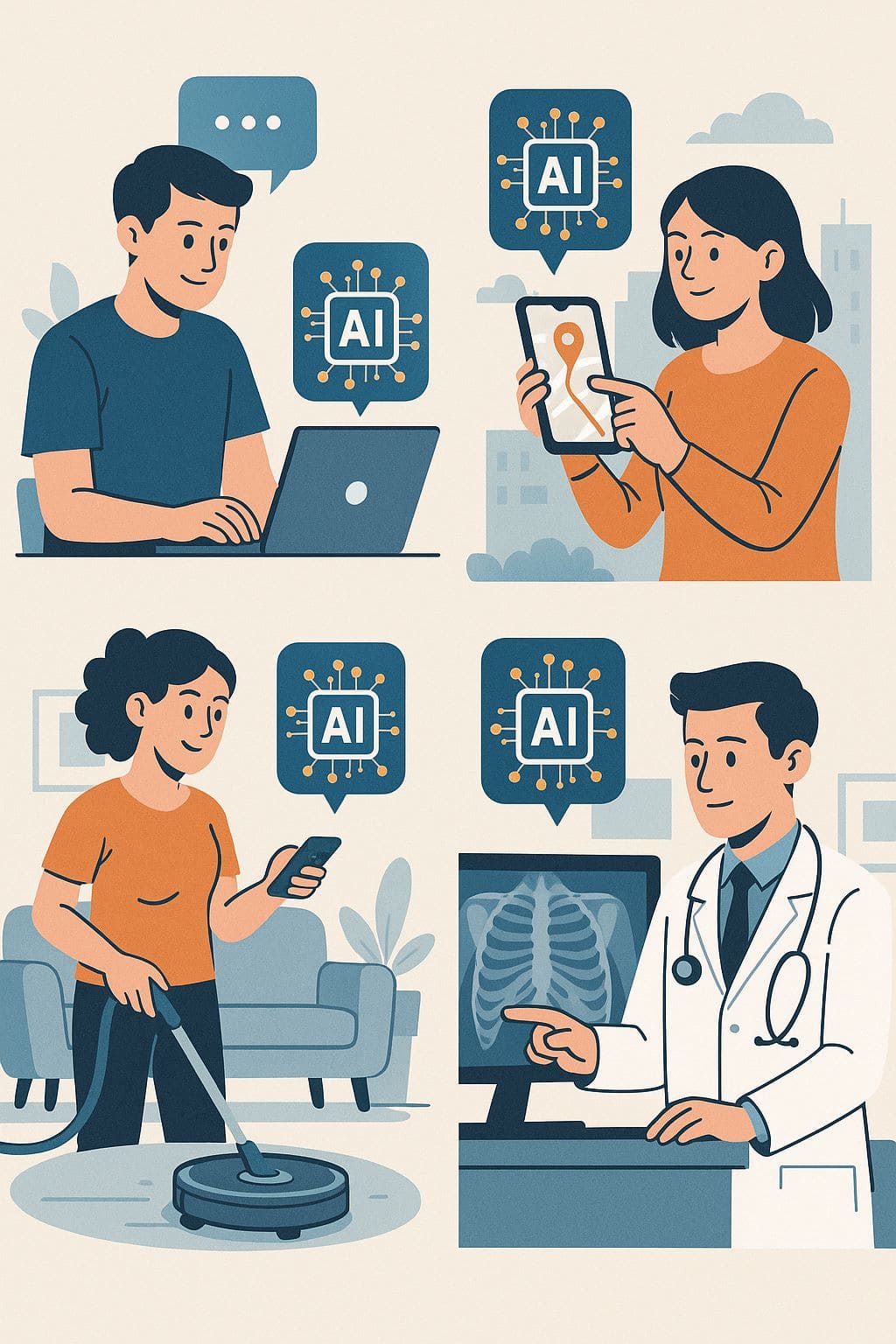
Below are some prominent fields applying AI with specific examples:
Healthcare: AI is revolutionizing healthcare. Diagnostic support systems use AI to analyze medical images (X-rays, MRIs) to detect diseases like early-stage cancer more accurately. Virtual assistants like IBM Watson can understand natural language and search vast medical literature to suggest treatment plans for doctors. Hospitals also use medical chatbots to guide patients, schedule appointments, remind medication – all thanks to AI.
Business & Finance:
In enterprises, AI helps automate repetitive processes, freeing human labor. Machine learning algorithms integrate into data analysis systems to predict business trends and better understand customers.
The financial sector uses AI to detect fraud (analyzing unusual transaction behavior), credit scoring, and even automated high-speed stock trading. Many banks have deployed chatbots supporting customers 24/7, quickly answering basic questions about accounts and services.
Education:
AI offers great potential in education, from automatic grading to personalized learning support. For example, software can automatically grade multiple-choice tests and even basic essays, reducing teachers’ workload. Online learning platforms use AI to track individual student progress and suggest study plans tailored to abilities.
“AI tutors” can interact with students, answer questions, and guide exercises, helping weaker students receive closer support. In the future, AI might partially replace basic teaching roles, allowing teachers to focus on more creative tasks.
Transportation:
The transportation sector benefits clearly from AI through the development of autonomous vehicles and intelligent traffic management systems. Self-driving cars combine AI algorithms in vision, machine learning, and decision-making to safely control vehicles on roads.
Additionally, AI is used to analyze real-time traffic data, predict and coordinate traffic signals, optimize routes – reducing congestion and accidents. Transport companies also apply AI in fleet management, demand forecasting, and delivery scheduling to save costs and improve efficiency.
Agriculture:
Artificial intelligence participates in smart agriculture through sensors and machine learning systems to monitor crops, forecast weather, optimize irrigation and fertilization. AI robots can identify weeds and automate harvesting. By analyzing soil and climate data, AI helps farmers increase yield and crop quality while using resources more efficiently.
Entertainment & Content Creation:
In entertainment, AI plays a major role in personalizing experiences. Music and video streaming services use AI to recommend content suited to individual tastes. AI is also used to produce music, create art, write scripts – sparking a trend of AI-driven creativity. For example, AI can compose background music based on desired styles or generate illustrations from text descriptions.
Many filmmakers and game developers are researching AI integration to create characters and storylines that dynamically respond to players. Although AI cannot fully replace human creativity, it has become a powerful tool helping creators experiment with new ideas faster.
In summary, AI is present in almost every aspect of life. From small tasks like filtering spam emails, recommending songs, to major roles like supporting medical surgery and managing smart cities – AI quietly enhances efficiency and convenience for humans. Understanding AI’s practical applications helps us better grasp the value AI brings and prepare for a future living and working alongside these “intelligent machine companions.”
Benefits of AI for Life and Society
AI brings many significant benefits at both individual and organizational levels. Below are some key advantages of artificial intelligence:
- Automation of repetitive manual tasks: AI helps automate tasks previously done by humans, especially boring or large-volume work. For example, production lines using AI robots assemble products 24/7, AI software automates data entry, email classification, etc. This frees human labor to focus on more creative and valuable work.
- High speed and efficiency: Machines can process data and compute much faster than humans. AI can analyze millions of records in seconds – impossible manually. This allows faster and more accurate decision-making in many fields (finance, logistics, scientific research), saving time and operational costs.
- Continuous learning and improvement: Unlike fixed-performance traditional systems, AI (especially machine learning) can become increasingly “intelligent”. They continuously learn from new data and user feedback to improve quality over time. For example, AI spam filters get better at blocking junk mail as they receive more emails, and virtual assistants better understand user habits after each interaction.
- Personalized user experiences: AI helps create products and services tailored to individuals. For instance, recommendation systems use AI to analyze habits and personal preferences, providing accurate content suggestions. E-commerce sites use AI to personalize shopping recommendations. Education uses AI to design personalized learning paths for each student. This personalization enhances user satisfaction and loyalty.
- Big data analysis and trend prediction: The world’s data volume is growing explosively (“big data”). AI is the key tool to extract meaning from big data. Using machine learning algorithms, AI can discover hidden patterns and forecast future trends based on them. For example, AI predicts weather, market demand, early disease outbreaks from search data – helping humans proactively plan and respond.
- Improved accuracy and reduced errors: Humans can make mistakes (especially in calculations, data entry). AI follows strict algorithms, so in tasks with clear rules, AI is often more accurate and consistent than humans. This is extremely useful in fields requiring high precision like healthcare (AI analyzes scans to find small tumors doctors might miss), industrial manufacturing (robots assemble components with near-perfect accuracy), etc.
- Enabling breakthroughs and new opportunities: AI not only optimizes existing things but also helps humans discover the unknown. Through simulation and analysis, AI supports scientists in finding new drugs, materials; helps architects test designs; helps artists create novel works. Advances like self-driving cars, smart assistants, space exploration all bear AI’s mark. AI is expanding human boundaries into new frontiers.
Thanks to these benefits, most industries today have implemented AI to some extent. AI helps increase productivity, reduce costs, and improve product and service quality. For individual users, AI brings a more convenient life: more personalized entertainment, better healthcare, safer transportation, and more. However, alongside benefits come challenges that require us to understand and use AI responsibly and effectively.

Challenges and Limitations of AI
Despite AI’s great potential, its application raises many challenges and concerns. Below are some key issues:
High initial deployment costs: Building effective AI systems requires large investments in infrastructure (servers, specialized computing devices) and expert personnel for development and maintenance. Not all organizations can afford this. Additionally, data – the raw material for AI – must be collected and standardized, which takes time and money.
Integration demands on existing processes: To apply AI, businesses must change or adjust their workflows. Integrating new technology can cause initial disruption, requiring retraining staff and time to adapt. Without proper strategy, AI may interrupt business operations short-term.
Data and privacy issues: AI needs massive data, including personal data (user behavior, health info, facial images, voice). Collecting and processing this data raises privacy concerns.
If not well managed, AI can be exploited for surveillance or privacy invasion. Also, training data that is not diverse and balanced can easily introduce bias, causing AI decisions to be unfair to certain groups.
Transparency and explainability: Many complex AI models (especially deep learning) operate as “black boxes” – it’s hard to understand why they make certain decisions. This poses challenges in fields requiring clear decision explanations.
For example, if AI denies a loan application, banks need to explain the reason to customers, but AI algorithms may not provide understandable reasons. Lack of transparency also reduces user trust, especially in critical situations like medical diagnosis or autonomous driving.
Job displacement due to automation: AI automates many tasks, meaning some traditional jobs may be replaced. This raises concerns about unemployment for certain workers. Repetitive jobs (assembly lines, data entry, basic customer support) are at high risk. Although AI will create new, higher-skilled jobs in the long term, society must prepare for retraining and job transitions as AI expands.
Ethical and safety issues: This is the biggest social challenge. AI can be misused for malicious purposes: creating fake news (deepfakes) that spread misinformation, automated cyberattacks, lethal autonomous weapons, etc. Without proper control, AI can cause serious consequences.
Even without malicious intent, AI can cause unintended harm – such as self-driving cars crashing due to unexpected situations, or social media algorithms unintentionally amplifying misinformation to attract engagement. These risks demand urgent AI ethics: ensuring AI acts ethically, complies with laws, and respects human values. Experts also warn of existential risks if AI surpasses human control, a distant but not negligible scenario.
Dependence and loss of control: Over-reliance on AI may cause humans to lose some skills and intuition. For example, dependence on GPS can reduce navigation skills; reliance on AI recommendations may reduce independent thinking.
Moreover, if critical AI systems fail or are attacked, consequences can be severe (humans lose timely intervention ability due to delegation to AI). Therefore, maintaining human oversight is essential, especially while AI is not yet perfect.
These challenges show that AI development and application require caution and responsibility. Organizations deploying AI must carefully consider legal and ethical aspects; national and international legal frameworks and AI management standards are needed. Users should also raise awareness to use technology safely. Artificial intelligence, no matter how smart, must be guided by humans – to ensure it serves society’s common good.

The Future of AI – Trends and Prospects
There is no doubt that AI will continue to develop strongly and increasingly impact humanity’s future. Based on current trends, we can imagine some main AI trends and prospects in the coming years:
AI becoming increasingly “intelligent” and approachable:
AI models (especially Generative AI) will continue improving in understanding and content creation. New versions of large language models will be able to converse more naturally, even remember long-term context and have broader knowledge.
This means personal virtual assistants in the future could truly be “assistants” who listen, empathize, and support many aspects of life. AI could also become digital companions sharing and chatting to help reduce stress – an area under research in mental health care.
AI becoming widespread across all industries:
While AI is currently a competitive advantage for some pioneering companies, in the near future AI will become a mandatory standard. Like electricity or the internet, AI will be integrated by default into products and services.
We will see smart factories with AI managing optimal operations; smart farms using AI to monitor crops and livestock; smart cities with AI coordinating traffic, utilities, and security. The ubiquity of AI will elevate efficiency in all fields but also require a workforce knowledgeable about AI operation.
The rise of Creative AI:
AI will not only assist but also co-create with humans in many artistic and design fields. Increasingly, AI creative tools support artists in music, painting, filmmaking, writing faster or suggesting new ideas.
Interestingly, AI can generate unexpected ideas that stimulate human creativity. In the future, we may see artworks co-created by humans and AI, or games with storylines dynamically adapted by AI to each player’s style.
Focus on ethical and responsible AI:
Given AI’s growing power, the world will pay special attention to building legal and ethical frameworks for AI. Governments and international organizations are discussing AI governance regulations to ensure technology is used for good purposes, without discrimination, and respects privacy and safety.
Aspects like transparency, explainability, and accountability for AI errors will be legislated. Technical standards for AI certification before deployment (similar to vehicle safety tests) will emerge. AI developers may need to follow professional “codes of conduct” like doctors’ Hippocratic Oath.
Moving toward General AI (AGI):
Although AGI is still distant, major tech companies like OpenAI, DeepMind, Meta, etc., are diligently pursuing this path. Every advance in narrow AI (winning new games, performing “extraordinary” tasks) is a stepping stone toward AGI. In the future, we may witness more versatile AI systems: for example, an AI assistant that can answer knowledge questions, pilot drones, and program – meaning it can do many different tasks rather than just one.
However, creating safe AGI will be humanity’s greatest challenge. Both optimistic and pessimistic scenarios have been envisioned around AGI (from AI solving all problems to AI surpassing humans). What is certain is that the journey to AGI requires global collaboration to ensure benefits outweigh risks.
Impact on the labor market:
In the near future, AI will change the nature of many jobs. Repetitive tasks will gradually be done by machines, but at the same time, AI workforce demand will explode: algorithm developers, data engineers, AI analysts, etc. Also, many new jobs will emerge that we cannot yet fully imagine (e.g., “AI trainers” or “algorithm auditors” were unheard of a few years ago). Humans will need to learn new skills to adapt, highlighting the importance of education and retraining in the AI era.
In summary, the future of AI offers both great opportunities and significant challenges. This technology promises to help humanity achieve unprecedented achievements and solve complex problems (climate change, pandemics, poverty) through artificial intelligence power.
At the same time, it forces us to seriously consider responsibility and ethics when empowering machines. The path ahead for AI will be shaped by human choices today. With wisdom and global cooperation, we can harness AI to create a bright future where humans and artificial intelligence coexist and thrive together.
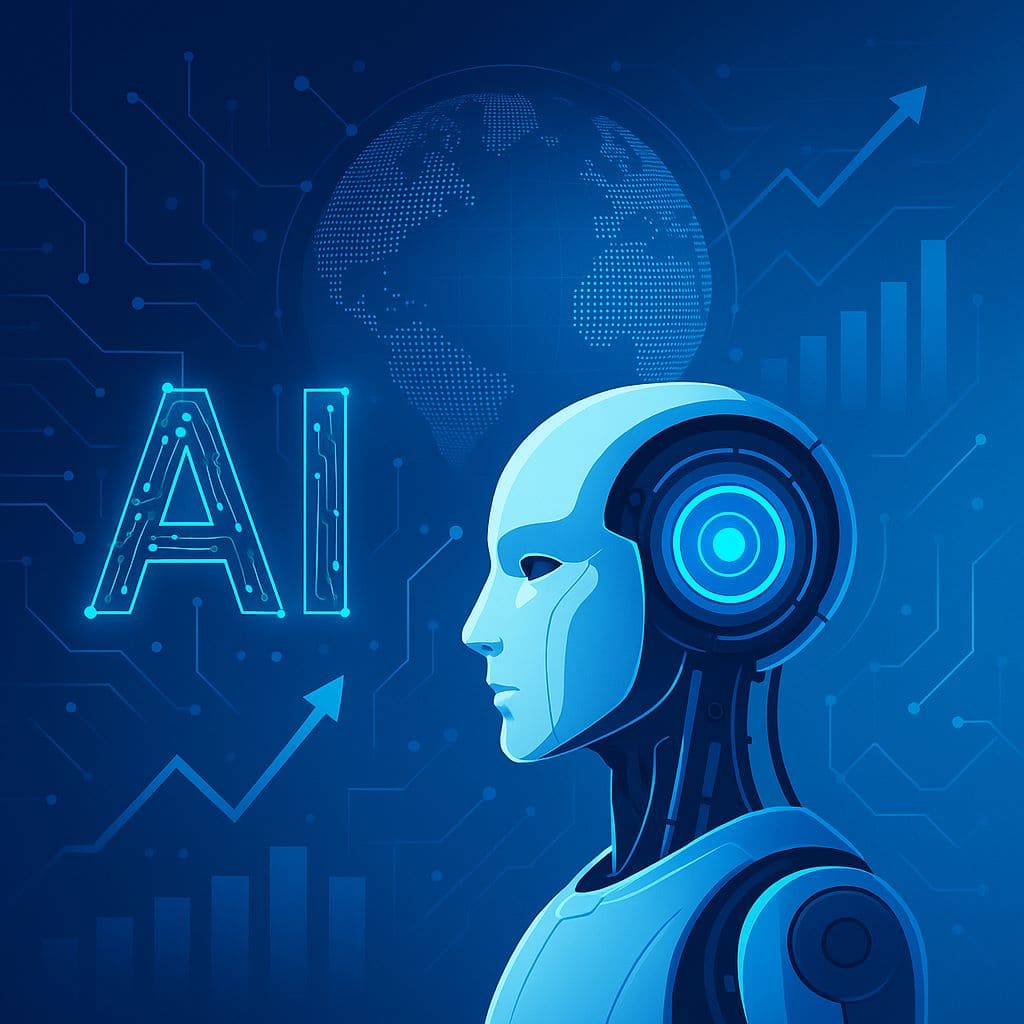
AI (artificial intelligence) is no longer a distant concept from science fiction but has become an essential part of modern life. By simulating human intelligence, AI helps machines perform many tasks from simple to complex – from answering everyday questions to driving, big data analysis, and supporting important decisions. Through this article, INVIAI hopes you have grasped what AI is in the clearest way: simply how humans make machines intelligent, able to learn and automate tasks that only humans could do before.
AI has many useful applications across various fields, bringing great benefits in efficiency, accuracy, and personalized experiences. However, AI also poses technical, economic, and ethical challenges that we must jointly address. Every technology has two sides; what matters is humans use it with intelligence and responsibility.
In the future, AI is expected to develop even more strongly, becoming smarter and closer to humans. Artificial intelligence will surely play a central role in the digital transformation and scientific progress of the 21st century. Understanding AI correctly from now on will help each of us be ready to embrace the changes AI brings and know how to apply AI effectively and safely in learning, work, and life.
In conclusion: AI is the key that opens the door to the future. With knowledge, preparation, and proper direction, we can turn artificial intelligence into a powerful ally, conquering new heights together for a better life for all. AI is humanity’s creation – and ultimately, it should serve humans according to the best goals. That is the core when understanding AI.


